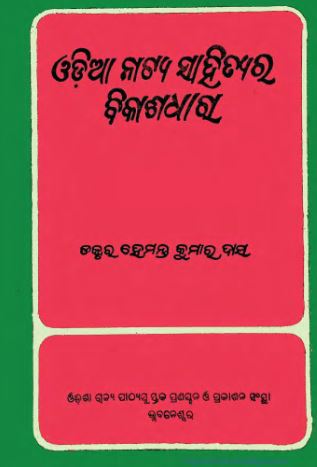Published in 1994, “Odia Natyasahityara Bikasadhara” by Hemant Kumar Das is an essential literary contribution to the understanding of Odia drama and its evolution. The book provides a comprehensive analysis of the two primary strands of Odia theatrical traditions: folk drama and Sanskrit drama. Through this exploration, Das highlights the rich tapestry of narratives, performances, and cultural reflections that constitute Odia natyasahitya (theatre literature), bolstering the importance of these genres within the broader context of Indian literature.
One of the most striking features of Odia folk drama is its intrinsic connection to the cultural fabric of rural Odisha. Das meticulously discusses various forms of folk theatre, such as “Daskathia,” “Jatra,” and “Chhau,” revealing how these performances are not merely entertainment but serve as powerful vehicles for social commentary. These folk dramas often depict themes of love, valor, and morality, encapsulating the day-to-day life and aspirations of the common people.
What sets Odia folk drama apart is its inclusivity; it often involves participation from various segments of society, allowing for a democratic expression of cultural narratives. Das emphasizes that the performance settings—usually outdoors, vibrant and community-oriented—contribute significantly to its ability to engage audiences emotionally and intellectually. He reflects on how these dramas occasionally incorporate elements of satire, thus fostering critical reflection in viewers about socio-political issues.
In contrast to folk traditions, Das delves into the influence of Sanskrit drama on Odia theatre. He acknowledges the profound impact of ancient Indian playwrights, such as Kalidasa and Bhasa, on the stylistic and thematic development of Odia drama. The elaborate use of language, poetic meter, and thematic depth in Sanskrit plays is highlighted, along with their emphasis on idealism and intricate character portrayals.
Das argues that while Odia adaptations of Sanskrit dramas often maintain the aesthetic grandeur of their originals, they are distinctly infused with local cultural nuances. This blending of styles enriches the theatrical landscape of Odisha and showcases the adaptability of Odia poets and playwrights in weaving together diverse influences.
One of the pivotal contributions of Das’ work is his examination of the transition from Sanskrit drama to the modern stage. He emphasizes how contemporary playwrights are striving to revive classical forms while simultaneously addressing contemporary issues—a testament to the dynamism of Odia drama.
The stage, as Das elucidates, serves not just as a physical space for performance but also as a crucible for cultural dialogue. Whether through the exuberance of folk performances that resonate with the local populace or the refined nuances of Sanskrit adaptations, the stage becomes a locus for exploring identity, morality, and the human condition.
As a literary scholar, Hemant Kumar Das not only documents the evolution of Odia natyasahitya but also advocates for its recognition as significant within the larger ambit of Indian theatre. By bridging folk and classical traditions, “Odia Natyasahityara Bikasadhara” emerges as a vital text for understanding not just the history of Odia drama but also its future trajectory.
In summary, Hemant Kumar Das’s “Odia Natyasahityara Bikasadhara” is an exemplary work that captures the essence of Odia drama, traversing through the richness of folk traditions and the depth of Sanskrit contributions while articulating their impact on contemporary theatre. This book is not just a scholarly resource; it is a celebration of the enduring spirit of Odia culture and its theatrical expressions.
Books Info
| Books name | Odia Natyasahityara Bikasadhara/ଓଡିଆ ନାଟ୍ୟସାହିତ୍ୟର ବିକାଶଧାରା |
| Author | Muktikant Panigrahi |
| No Of pages | 319 |
| Publisher | NA |
| Publication | 2009, 2e. |
| Printed At | Manasi Printers |
| Distributor | NA |

